Eduardo Chillida, iron, fire, earth and wind
Eduardo Chillida is one of the most influential sculptors of the 20th century, comparable to Brancusi, Calder and Giacometti. Passionate about iron, allied with fire, earth and wind.
His best tool was simplicity, which he transmuted into magic sculpted by his hands.
A happy childhood by the sea marked his intimate relationship with the landscape. As a child he was hypnotised by watching the waves breaking where, as an adult, he placed his immense and famous sculpture “Comb of the Wind“. It was his personal homage to the city where he was born, lived and died.
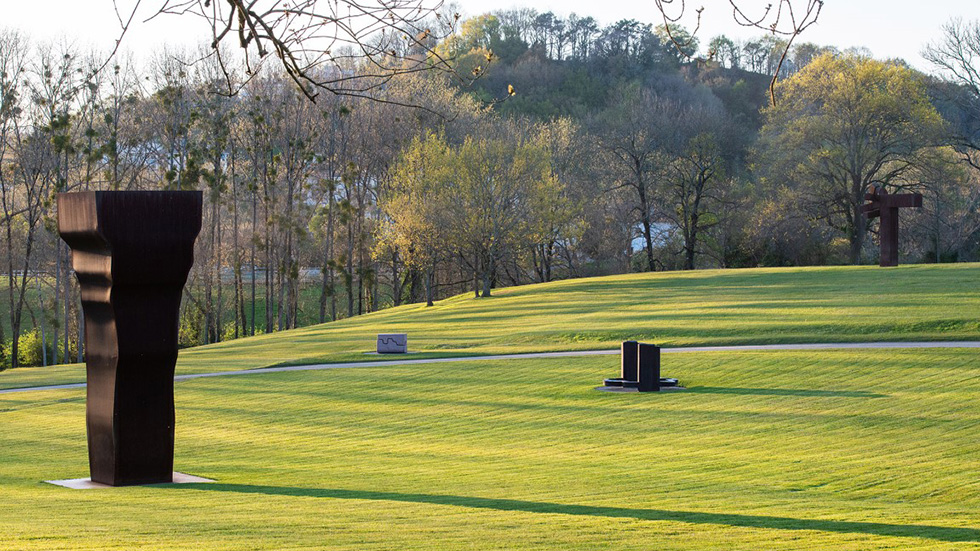
Eduardo Chillida (San Sebastian, 1924-2002) was the son of the soprano Carmen Juantegui. He was a professional football player. He studied architecture in Madrid, abandoning his studies to learn sculpture and drawing at Círculo de Bellas Artes. His change of vocation responded to a process of intellectual maturation.
“Architecture is an artistic creation that responds to the needs of man. Sculpture does not provide answers, but investigates the unknown”.
He always envisioned architectural principles and called himself the “Architect of the void“.
With a scholarship in Paris (1948), he produced his first figurative sculptures influenced by classical Greek carvings in the Louvre Museum. These were crucial years of learning and experimentation.
He exhibited at the Salon de Mai and Galerie Maeght alongside geniuses such as Chagall, Miró, Calder and Giacometti.
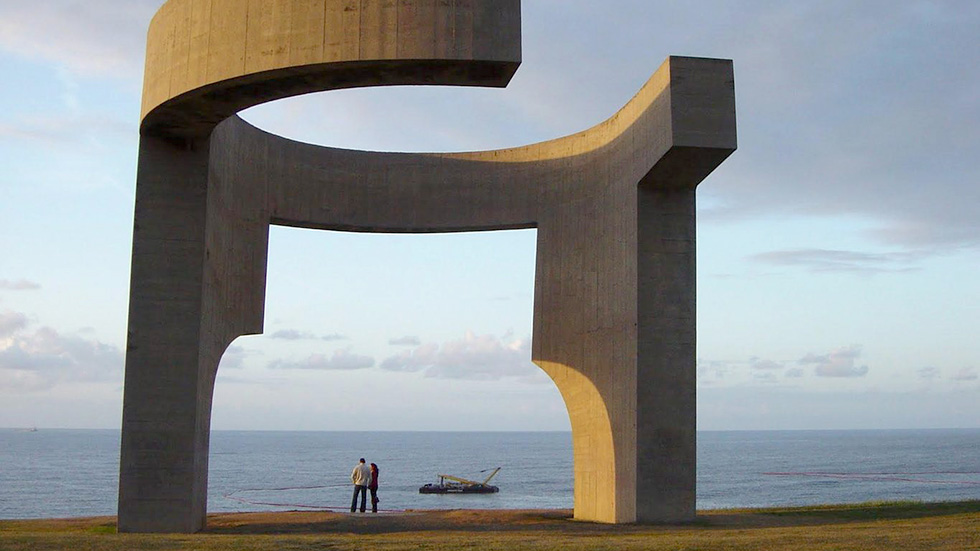
In 1950 he married his teenage sweetheart, Pilar Belzunce, born in the Philippines, with whom he would have eight children and a deep communion of souls. It was she who encouraged him to leave architecture and devote himself to creation.
In Paris he had a profound creative crisis and tried to destroy all his works. Pilar encouraged him to reinvent himself and to look for a place to keep them. He always kept all his creations: drawings, models, sketches…
His crisis made him return from Paris to the Basque Country where he rediscovered his roots. There, in a forge in Hernani, he envisioned his passion for iron and formed his personal style.
His work has intimate connections with the deep roots of Basque culture. His first abstract sculpture reinterprets the funerary steles of his homeland.
He created a unique language based on enquiry, as an intuitive journey into the mysteries of life. His philosophical restlessness led him to draw inspiration from nature, music and the universe.
With the doors for the Basilica of Aránzazu he began his first public work. His monumental pieces evoke universal values such as tolerance and freedom.
Chillida travelled frequently to Paris, where he established a key link with Aimé Maeght.
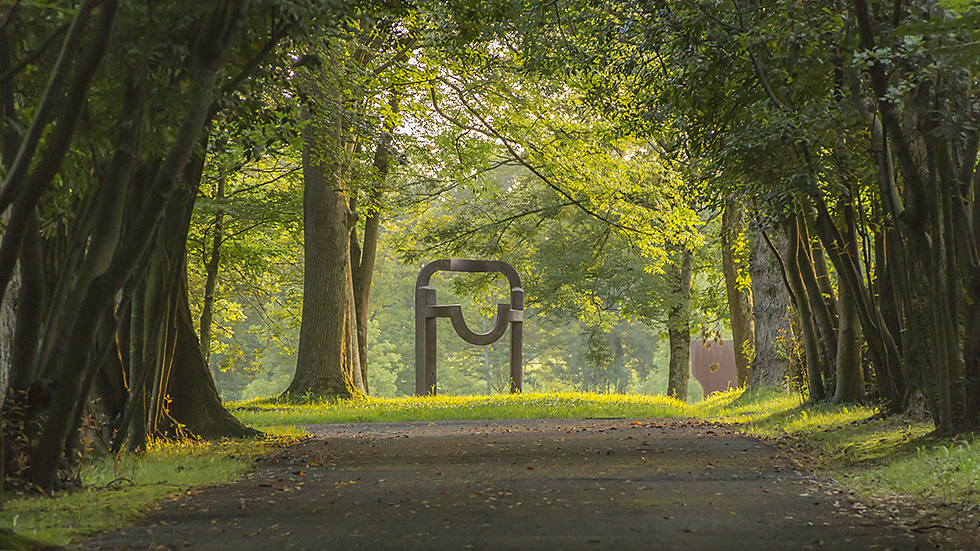
He considered himself a specialist in questions. He was always thinking about everything, with questions such as: Why do the branches of trees grow like this? Why the movement of water and waves? His work was based on questions and in his works he rehearsed the answers.
“Nothing has done more for culture than the desire to know of those who do not know”.
He was a brilliant and hesitant creator.
“My life consists of always doing what I do not know how to do, because what I know how to do I have already done… my whole life is based on the verbs search, doubt and question”.
A great reader, he had poetry as one of his beacons and sought the complicity of poets such as San Juan de la Cruz, José Ángel Valente, Neruda, Goethe and Edmond Jabés to create his sculptural poems.
“I have yesterday’s hands, I lack tomorrow’s”.
While the sculptor devoted himself to creation, his wife Pilar took care of relations with galleries, museums and clients, as well as painting. In 1983, the couple discovered the Zabalaga estate, an immense park with a farmhouse, a jewel of the 16th century. They bought it, saving it from ruin and embarked on the creation of their new home and the Chillida-Leku Museum (Chillida’s House).
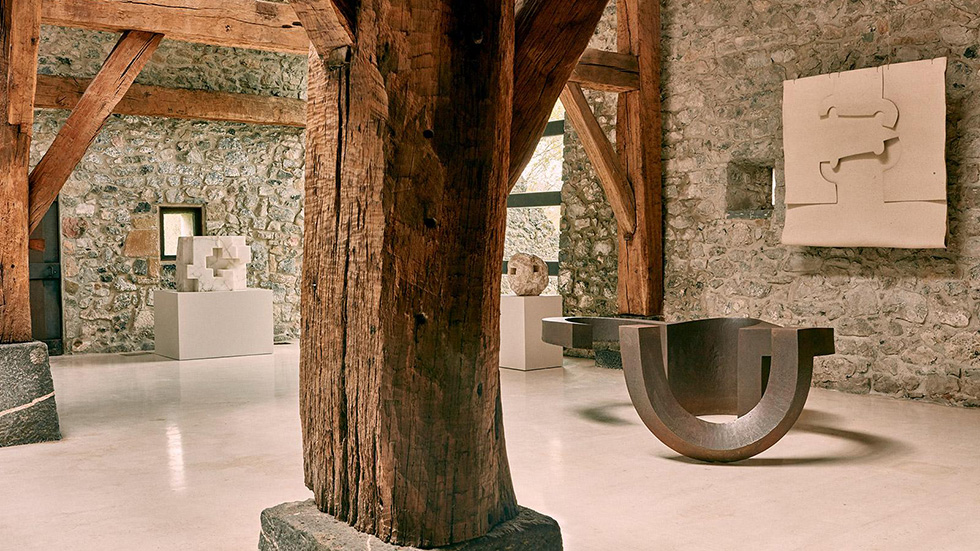
It had an eventful history marked by crises with the Basque Government until it was closed in 2010. Today it is managed by the Swiss Hauser & Wirth Gallery.
The most influential couple in the art world, according to “Art Review”, Manuela Hauser and Iwan Wirth, obtained the exclusive rights to the Succession and the Museum.
It reopened in 2019 with Luis Chillida, the sculptor’s son, as President of Fundación Eduardo Chillida y Pilar Belzunce.
Today marks the twentieth anniversary of the death of the brilliant “Architect of the void”. An admirer of Picasso and Julio González, his legacy shines more brightly than ever in the museum he created himself.
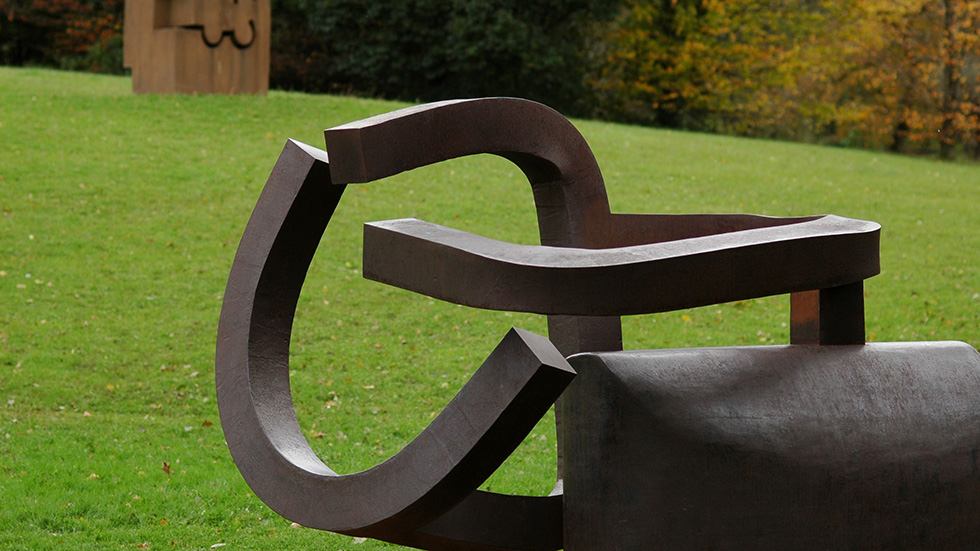
The greatest genius of this universal sculptor was his ability to create the avant-garde from the most ancestral.
He was allied with the word in a life of incessant search. His eagerness to discover the ethereal essence of objects, in a cordial battle with materials, can be summed up in the verse he borrowed from the poet Jorge Guillén:
“The deep is the air”.
Eduardo Chillida died at the age of 78 in his home on Monte Igueldo (San Sebastián, 2002), without completing his last project: an enormous monument to tolerance in the heart of Monte Tindaya, Fuerteventura. His wife Pilar died in 2015 in Chillida-Leku. Chosen to perpetuate his legacy, the museum displays his work in harmonious dialogue with nature. There, under a magnolia tree, lie the ashes … dust in love… of the couple.
On the obituary, published in “El Diario Vasco“, there was a small drawing that Chillida made for Pilar, with this text:
“Insofar as I am nature, I follow my course like a star”.
Exhibitions
- In 1966 he had his first major retrospective exhibition at Houston Fine Arts Museum.
- In 1980 he exhibited at Guggenheim New York, the Palacio de Cristal in Madrid and, for the first time, in the Basque Country: at Museo de Bellas Artes de Bilbao.
- From 1989 he was a member of the Academia de Bellas Artes.
- The Museo Reina Sofía presented his largest retrospective exhibition in 1998.
- Chillida has 50 monumental public sculptures and his work is present in collections and museums all over the world, with almost 500 solo exhibitions: Guggenheim Bilbao, Jeu de Paume, Paris, Hermitage, St. Petersburg, Joan Miró Foundation, Barcelona, Mie Prefectural Art Museum, in Tsu-Shi, Japan, Pablo Picasso Graphikmuseum…
Prizes
- Medalla de Oro, Bellas Artes
- Príncipe de Asturias
- Bienal de Venecia
- Honorary Member, Royal Academy of Arts, London
- Grand Prix des Arts et Letres, Paris
- Europäischer der Künste, Strasbourg
- Graham Foundation, Chicago
- Carnegie Institute, Pittsburg
- Praemium Imperiale, Japan
- Wilhelm Lehmbruck Kandinsky, Kaissering

